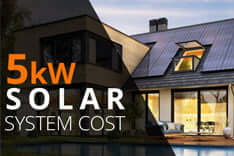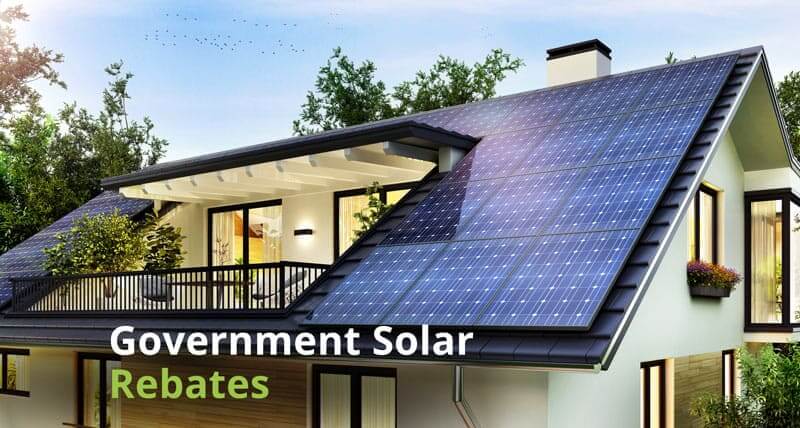Home Solar Inverters Micro Inverter vs Central Inverter
Pros and Cons of Micro Inverter vs Central Inverter
Choosing the right solar inverter is crucial for establishing your solar panel system. These inverters are essential for converting the direct current (DC) generated by your solar panels into alternating current (AC), making the power usable in your home.
Microinverter consists of a small box located on the back or very close to a solar panel. Its role is to convert DC electricity produced by a single solar panel. Central inverters are for applications such as large string arrays on buildings, industrial facilities as well as field installations. They are basically just a very large string inverter.
Let’s start with the explanation of both types of inverters, their advantages and drawbacks.
| Central inverter | Micro inverter | |
|---|---|---|
| Cost | Winner | 20% more expensive |
| System expansion | Complete replacement needed | Just add more with each panel (cheaper) |
| Warranty | 15 year | 25 year |
| Efficiency w/ partial shading | Horrible | Perfect |
Table of Contents
ToggleWhat is a solar inverter?
How it works
Solar inverters vary in how much electric current or voltage they can handle. There is a minimum amount of voltage solar inverters must receive in order for them to work at all. Solar inverters must be rated high enough to handle the maximum amount of power that your solar array can produce.
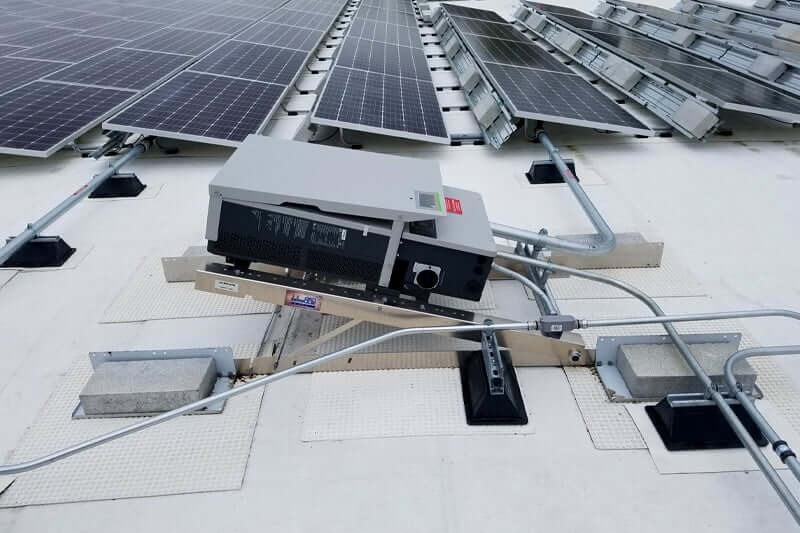
The “brain” of your solar system
Solar inverters also relay critical information to you about how well your solar setup is producing energy for your home. This data allows you to monitor system and panel efficiency.
Make sure it is installed correctly, and monitor its functioning regularly because more than 80% of all solar system failures in the first 10 years of operation are caused by the inverter.
What is a microinverter?
Microinverters are considered high-tech products module-level electronics that convert the DC electricity produced by PV panels into AC electricity used for household appliances and HVAC systems.
In other words, a micro inverter system behaves like a tiny string inverter for a single PV panel located on that particular panel. They also do DC optimization before the inversion.
Each PV panel is equipped with its own microinverter and functions completely independently of all other inverters in the solar array. Unlike string inverters, there is no single point of failure where the entire array could falter.
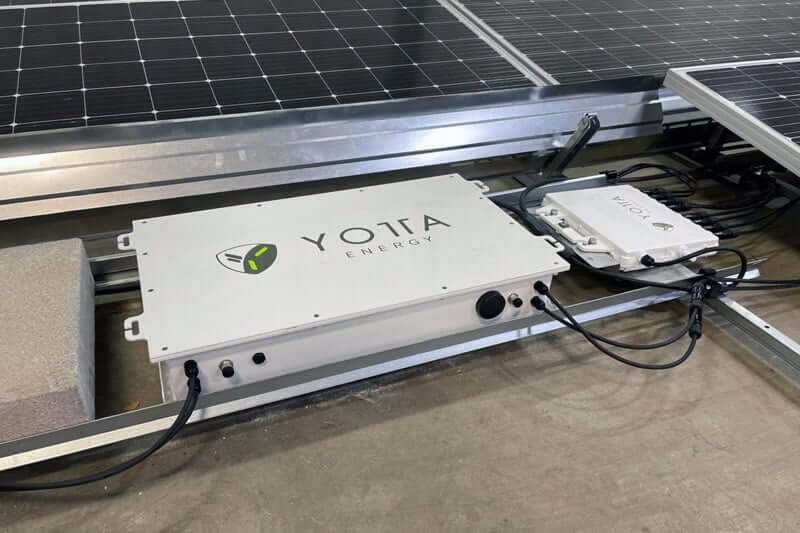
Independence
Microinverters are independent. This means that your panels can be of different wattages or types, and located anywhere on your property, and still function perfectly.
If you want to expand your solar production in the future, it is much easier to do with microinverters.
More advanced microinverters are available recently. They perform the DC to AC conversion and utility grid send-back for 2-4 panels in a solar array which means less hardware, reduced installation cost, and fewer places where something could go wrong.
How does a microinverter work?
Every single solar panel connected in parallel grid functions independently of all the rest. In this setup, the solar energy produced by an individual panel is transformed from DC to AC electricity by the microinverter.
For the best optimization and smoothest conversion, modern microinverters employ maximum power point tracking MPPT and other advanced methods to optimize the solar power of each panel of your home system.
AC electricity enters your home after the inversion where it can be used to run your appliances and heat or cool your home.
String vs microinverter cost
String inverters are much cheaper than microinverters. This is due to the fact that manufacturers have had decades to improve their operations, and most solar installations only require a single inverter, as opposed to microinverters and DC power optimizers, which are utilised behind each individual solar panel.
A String inverter for a 5 – 6.6kW system will cost $1,850. This compared to the cost of installing a microinverter behind every panel on the same size system which will cost about $3,300.
Micro inverters do have a longer warranty and if one fails, you can replace it for about $220 without the need of replacing all of them. They also pay for themselves with extra energy production if you have a partially shaded roof.
Pros and Cons of a microinverter
Pros
- Panel level MPPT;
- Malfunctioning of a single panel will not have an impact on the entire array;
- Panel level monitoring;
- Increased safety because of the lower DC voltage;
- Modules can be oriented in different directions;
- Since one shadowed module will not affect a whole string, yield is increased from sites that suffer overshadowing;
- The system is simpler to design because you don’t have to calculate the string lengths;
- When repairing or updating older systems you can use different models of modules in one system.
Cons
- Compared to string inverters expenses are higher in terms of dollars per watt;
- Complex installation;
- Due to their positioning in an installation process, some micro-inverters may suffer from extreme heat;
- Since there are multiple units in an array, maintenance costs are higher.
Microinverter advantages
Microinverters provide a few distinct advantages over other solar power inverter systems. Here are a few to think about:
Microinverters are covered by a 25-years of warranty
Longevity is an important factor to consider. The inverter is the most expensive and most prone to fail component of your solar system. It’s comforting to know that microinverters come with 25-year warranties, much like your solar panels. Other inverter technologies, such as string and hybrid inverters, only have 8 to 12-year warranties.
Microinverters with integrated panels are simple to set up
Microinverters are built into solar panels out of the box by companies like LG to make installation easier for installers. All that’s left to do now is connect the panels, and the system is ready to use.
Monitoring of results
Because microinverters are installed behind each panel in your PV system, you may use your smartphone to monitor individual panel performance. When your electrical performance falls short of expectations, smart applications like the Enphase Enlighten system can alert you.
For example, if the weather is bright and sunny, but your panels are producing as if it were a cloudy day, you’ll be notified that your panels aren’t producing at their regular levels. You can check for debris, bird faeces, or equipment damage that could be affecting your system’s function this way.
More electricity
One big advantage of microinverters is realised 5 and 10 years down the track when solar panels begin to lose their efficiency. When solar panels are in a series and use a central inverter, the output of the entire array of panels is reduced to the lowest output, so if one panel is deteriorating quicker than the others, the whole system’s output is reduced.
With microinverters, each panel works independently and can generate is max energy load without being affected by the weakest link.
Suitability for challenging installation conditions
Knowing what we know about solar panels linked in a series if a solar installer needs to install some panels on a north-facing roof (optimal) and other panels on a northeast (sub-optimal) roof, the output of the entire system will be compromised.
Ease of system expansion
Microinverters is easy to add one at a time if you decide to extend your system in the future. Each panel and micro inverter pair can be readily added to your existing solar array without the requirement for new string inverters to be purchased, sited, and installed.
Microinverters disadvantages
Cost
The cost of micro-inverters is the most significant disadvantage. On a basic 5kW household solar installation, they are often $1,000 or more expensive than a string inverter.
Maintenance
If one of your microinverters fails, not only will determining which one has broken be difficult but servicing and replacing the component is also not as simple as installing a new string inverter on the side of your house.
What is a central inverter?
Central inverters are large grid feeders and are often used in large photovoltaic systems, such as open-loop systems with a rated output of more than 100 kW. Usually, central inverters feed three-phase into the grid.
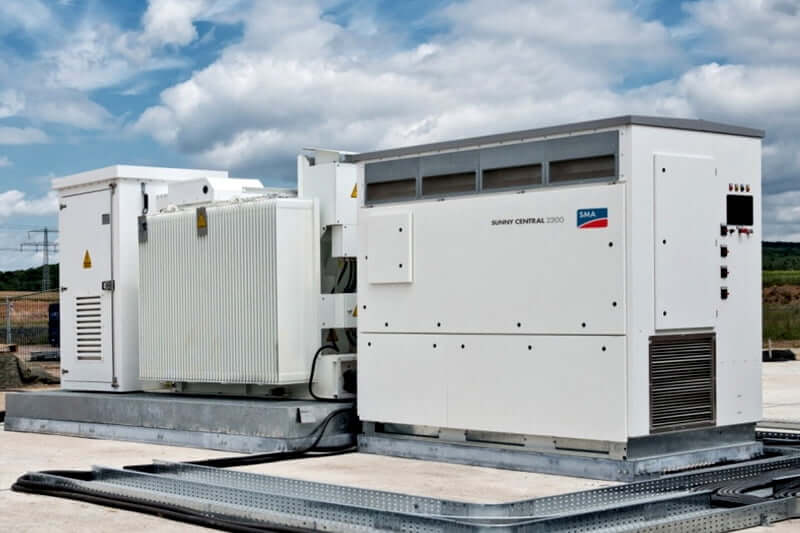
How does a central inverter work?
Central inverters the DC power collected from an array of solar modules into AC for connection to the grid.
They are typically ground or floor mounted, as opposed to string inverters, which are typically installed on a wall or other vertical structure. They range in power from around 50kW to over 1MW and can be designed for indoor or outdoor use.
Architectures and features
The simplest architecture of central inverters consists of a single DC-AC conversion stage. Some inverters have a DC-DC boost stage to increase the MPP voltage range. In some cases, a low-frequency transformer is provided at the output to boost the AC voltage and provide isolation. However, this decreases the efficiency and increases the size, weight and cost of the inverter.
Pros and Cons of a central inverter
Pros
- Credibility due to presence for a long time and use in the market;
- Low capital price per watt;
- Ability to produce much higher power;
- Reliability because central inverters are placed in a protective environment;
- Easy installation.
Cons
- The potential for a single point of failure even if a single panel is shaded or fails due to some other reasons, will affect the performance of the entire system;
- Higher risk factor because of the produced DC voltage of high rating, which could be life-threatening to both the operators and owners;
- Higher replacement cost.
String inverter advantages
In comparison to other inverter systems, string inverters have a few distinct advantages. Here are a few to think about:
It's simple to replace
Because most residential systems only require one string inverter, diagnosing issues is rather simple. Your inverter is the component of your system that is most prone to fail over time.
It’s more enticing to be able to replace one device at a low cost than to have to troubleshoot multiple inverters or power optimizers behind each of your solar panels.
Troubleshooting is simple
A big plus to having a central inverter is less can go wrong, and if it does it’s easier to sort out. One moving part is better than 20 moving parts. There is less room for error. Having a central inverter reduces the risk of mechanical malfunction.
There's a lower chance of a wiring blunder
Between the solar panels and the string inverter, there are fewer connections. In comparison to a microinverter system, there is a lower risk than a string inverter configuration will be poorly cabled.
String inverter Disadvantages expanded
Unsuitable for system expansion
String inverters may not be the ideal option if you plan to expand the size of your solar array at some point in the future. Each string inverter must be correctly installed.
To get the most out of a string inverter, it should be running at or near-maximum capacity. As a result, if you wanted to install more solar panels, you’d need a bigger inverter than the one you have now.
Another option is to connect your new panels to a separate new inverter that connects to your existing inverter’s loads, but this is usually just as expensive as obtaining a new, larger inverter.
Microinverters are a preferable option if you’re not sure if you’ll want to increase your solar system in the future. They are naturally modular because they convert DC to AC behind each panel.
Limited system monitoring
Being able to check the output of your solar installation from your smartphone is a fantastic advantage in today’s world. While many string inverters allow you to see the overall performance of the system, you don’t have access to the performance of each individual panel.
That degree of detail may seem excessive, but it will come in handy if one of your panels is damaged or attacked by bird poop without your knowledge. With microinverters and power optimizers, panel-level monitoring is possible.
Shorter lifespan
Microinverters have a 25-year warranty, whereas string inverters have an 8- to 12-year warranty.
Efficiency in partial shade
String inverters require solar panels to be wired in series or circuits, if one solar panel’s output is impacted, the entire series is impacted. If just part of one panel in this series is shaded, it reduces the output of the entire system, not just that panel.
Top solar inverters - Australian installers’ choice
The Australian market has a great and wide offer of solar inverters brands. According to a survey, the following are the top choice for Australian installers. Solar inverters installers were asked two separate questions to consider the absolute best in terms of performance, features and build quality compared to the best value for money.
What solar inverter brand would you put on your house if money was no object?
First place: Fronius
If you are familiar with the Australian solar industry, this would not be a surprise for you. Fronius has stormed the Australian solar market over the last decade and become a favourite among homeowners and installers. Fronius doesn’t have a famous start in Australia since some of their IG series inverters had a high failure rate. But because of those failures, Fronius engineers found the weak point in those inverters and replaced any failure cards that popped with a more reliable design.
Second place: SolarEdge
SolarEdge is only “one vote” behind Fronius which means that both brands are well accepted by the Australian installers. SolarEdge is a very polarising brand in Australia because installers seem to either love them or hate them.
SolarEdge inverters must be used with an optimiser on every panel. SolarEdge also has a clever hybrid inverter design and was among the first inverter manufacturer to integrate an EV charger.
Third place: Enphase
Enphase is unique in that they are the only microinverter manufacturer of note who sells in Australia. Their systems have many advantages over string systems, such as safer voltages and fault tolerance.
The biggest disadvantage of Enphase inverters is the cost. A few years ago Enphase promised they’d get microinverters as small as an iPhone and lower cost per watt than string inverters, but that never happened. They are still highly regarded for their flexibility and reliability.
Top picks for solar inverters
First place: Sungrow
Sungrow inverters are in the best budget inverter category, and not without reason. Sungrow 5kW inverter wholesales for almost half the price of a Fronius, and the Sungrow is well built, has excellent Australian tech support and has some great features such as integration with Solar Analytics.
Second place: Fronius
This is a weird choice because Fronius aren’t famous for their budget-friendly inverters. So how to this result? Many installers in Australia do not agree with the concept of budget-friendly inverters. Fronius is recommended by most of the installers no matter what your budget.
Joint third place: GoodWe , SolarEdge and SMA
GoodWe is a budget inverter brand with a good reputation for reliability and features. But the presence of premium brands like SolarEdge and SMA is weird. A comment from an installer during the survey helps explain why SolarEdge appears in the budget category: “If shading was a problem I would use Enphase IQ7A as my premium choice and SolarEdge as my less expensive option”.
Another reason is SolarEdge and SMA have a solid following in Australia and some installers can’t bring themselves to install anything else.
What is a power optimizer?
Power optimizer, aka DC optimizer, is an electronic device referred to generally as module-level power electronics (MLPE). Power optimizer increases the power efficiency of individual solar panels by smoothing out the electrical current produced by those PV panels.
Usually, one DC optimizer is attached to each panel in a solar setup. As a cost-saving measure, they may only be attached to a solar panel that experience intermittent shading or are otherwise poorly placed for maximum power production.
Power optimizers may be incorporated in the PV panels during the manufacture or can be installed during solar installation at your home.
When power optimizers are integrated with a string inverter, each one allows instant, remote diagnosis in the case of malfunctions so the optimizer or the panel attached to it can be repaired, replaced, or unobstructed without sacrificing the energy production of the entire system.
How does a power optimizer work?
A power optimizer modulates the energy produced by an individual PV panel. It maximizes a solar module’s electrical output which naturally varies slightly through the day depending on many factors such as passing clouds or temperature changes.
The power optimizer readies the panel’s power to be delivered in a form that’s appropriate for a particular string inverter. There are some optimizers available that can serve two or more panels at the same time.
DC optimizers accomplish these functions through maximum power point tracking MPPT. They calculate the maximum amount of energy produced by a panel by capturing the so-called “sweet spot”.
After that, the power optimizer transmits this optimized DC electrical energy to the inverter that subsequently performs the DC to AC conversion.
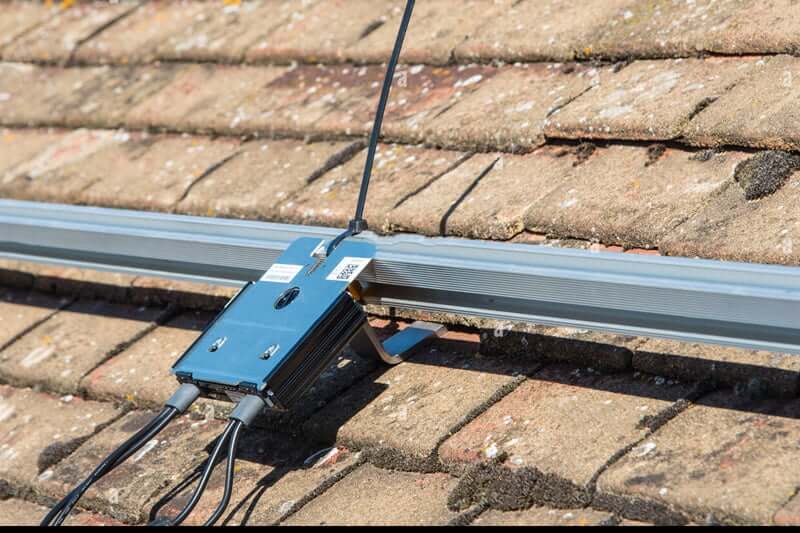
Pros and Cons of power optimizers
Pros
- MPPT capability increases the efficiency of individual solar panels;
- Prevents shutdown of an entire string of panels and possibly the entire solar array during temporary obstruction or damage
- Allows for remote monitoring to facilitate troubleshooting and eventual repair or replacement.
Cons
- Additional labour costs if PV modules don’t come manufactured with optimizers already;
- In cases where a string inverter will do fine on its own, they may be expensive and extraneous components;
- Does not eliminate dangerously high voltage that leads to potential induced degradation PID of PV panels over time.
How do grid-tied solar inverters work?
Sometimes this technical information is boring but is good to know them.
A traditional inverter uses the power semiconductors for the purpose of switching DC on and of very fast in two different directions, simulating an AC sine wave.
This is filtered by an inductor and then the voltage is boosted in a transformer to the grid voltage of ~ 240 V. Typically, the inverter’s DC input bus voltage needs to be greater than the peak of the AC voltage (before the transformer). In other words, a minimum of 250 V DC voltage allows the creation of 180 V AC, which then flex boosted to 240 V in the transformer. Capacitors are used to filter ripple currents on the DC lines.
Ripple can disrupt MPP tracking and can increase DC resistive losses. Ripple is caused by the power semiconductors switching on and off. Typically, low-frequency electrolytic capacitors are used, but these are susceptible to failure (due to the high temperatures they are drying over time). Film capacitors are far better but they are more expensive and larger.
FAQ's
Solar microinverters are relatively expensive. They need to be fixed on the back of every single solar panel. The usual price of microinverters is around $1,000 or higher compared to central inverter on a standard 5kW solar panel installation.
Manufacturers of microinverters are on the front line to defect the higher price of the micro inverters. It stands to reason that if micro-inverters allows greater performance and output of the solar system and are more reliable, then over time they will have a better payback.
Table of Contents
Toggle

